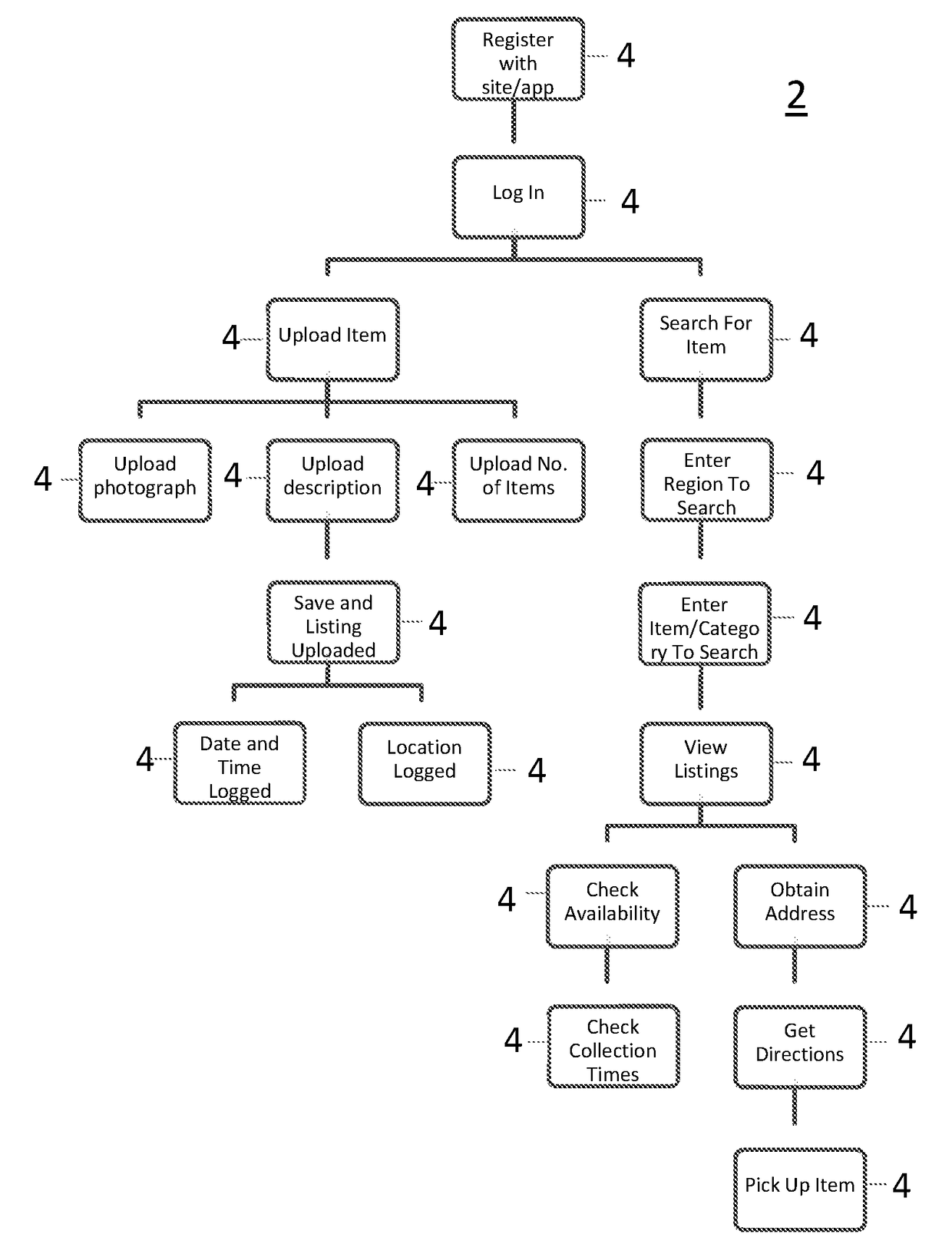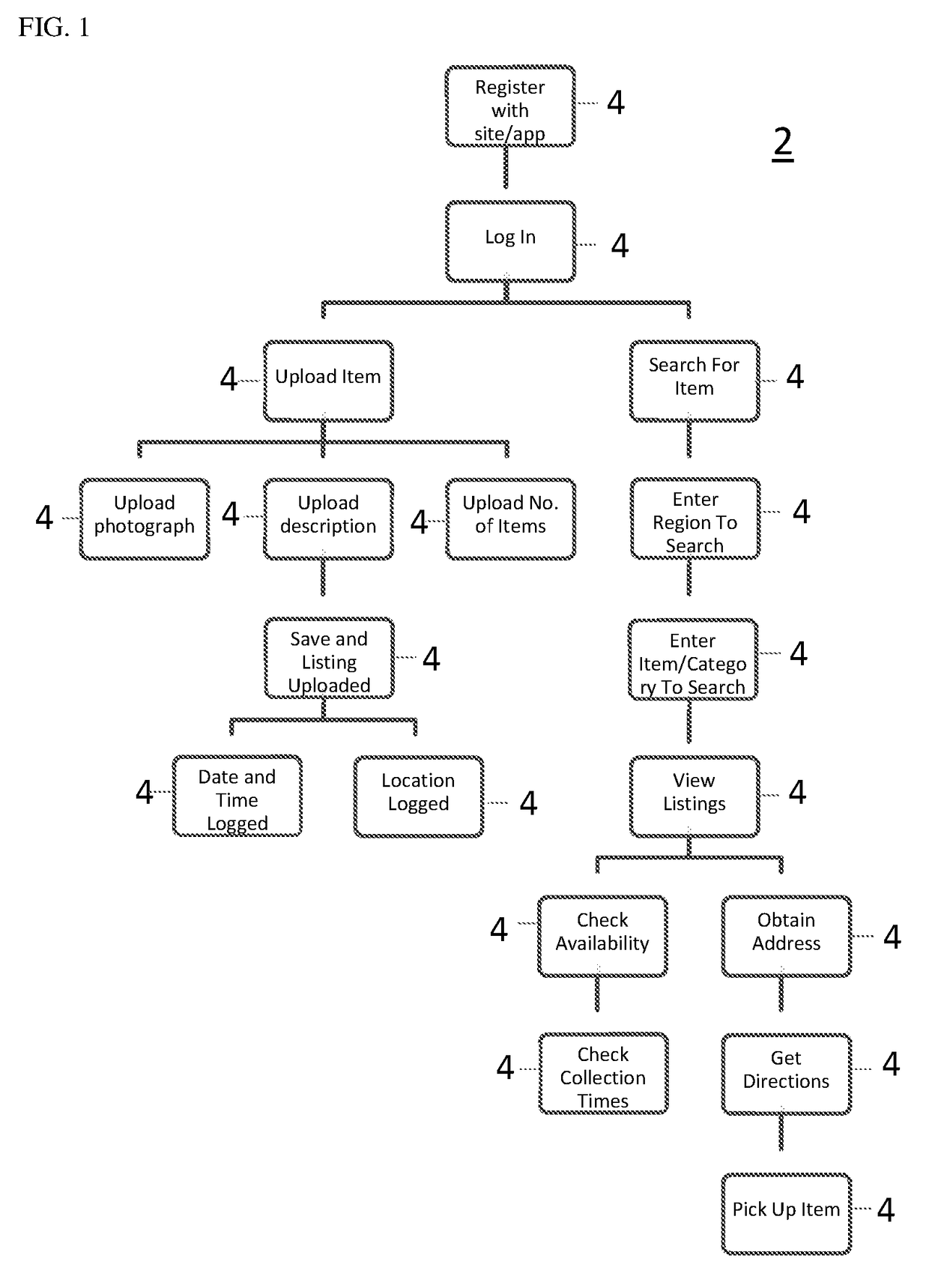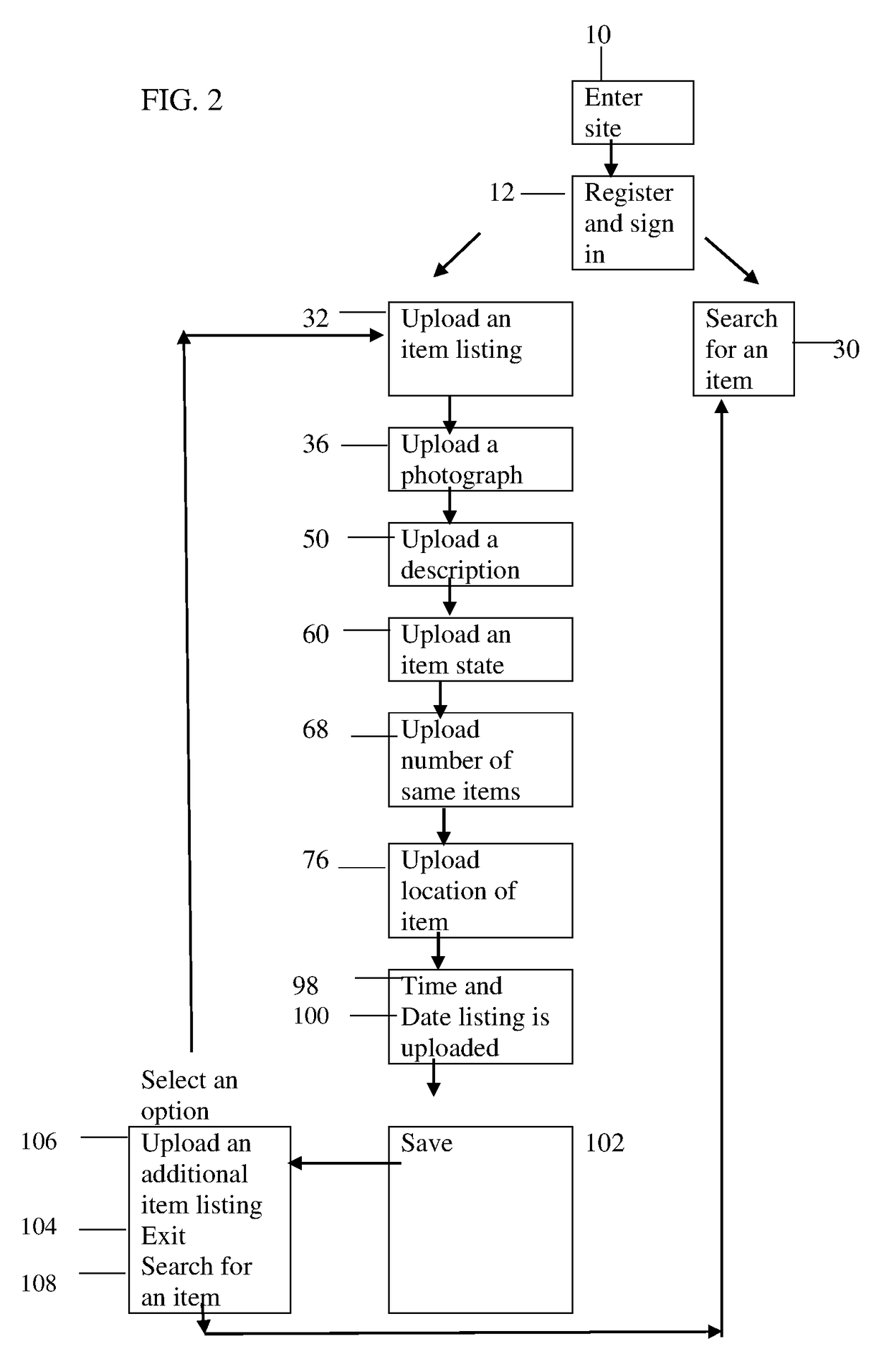Database And Method Of Use Thereof
a technology of database and data processing method, applied in the field of database, can solve the problems of inefficiency of collection method, social pressure, waste increase, etc., and achieve the effect of facilitating access and facilitating access
- Summary
- Abstract
- Description
- Claims
- Application Information
AI Technical Summary
Benefits of technology
Problems solved by technology
Method used
Image
Examples
example 1
[0131]A user upgrades his television and throws out his old television onto the street. The user has downloaded an application of the present invention onto his mobile phone. The user opens the app and in the menu selects the uploading a listing option. The user takes a photograph of the discarded television on the street and uploads the photo onto the application site. The user is then instructed to select a location option. The application uses a GPS to identify the location of the discarded item by assuming that it is the same as the GPS of the user device being employed to upload the listing and displays the address. The app uses the address to determine when the next municipality collection day is and this information is displayed on the app site with the listing of the television. The user is provided with a select the state of the television option. From the options provided the user chooses ‘in working order’. In the number of items selection, the user inputs ‘1’. The listin...
example 2
[0132]A user has downloaded an application of the present invention. The user opens the application and selects the seeking option. The user selects the geographical area in which he is interested in seeking. The user selects the city of Modi'in. The user then selects the entire city as the part of the city he is interested in searching. The application displays listings of discarded items. The user is seeking a washing machine. The searching user uses the search feature to search for a washing machine. The application displays one listing. The listing includes the location of the washing machine and indicates that the municipality collection time is the next day. The user arrives at the location. The washing machine is there and the user inspects the washing machine and decides to take it. The user selects the no longer available option on the displayed menu. The application updates the listing to display the verification that the washing machine has been taken. The user then takes...
example 3
[0133]The municipal waste collection service of a city adopts the searchable network-based database of thrown out items of the present invention to use for collecting non-regular waste. The waste collection service provides its customers with access to a program / application of the present invention. The collection service instructs its customers to upload listings of non-regular waste to be collected, via a website, or an app of the present invention or which is connected to the system of the present invention, to which the waste collection provider has access. The waste collection provider informs the customers of the days for collection and the deadline for throwing out the waste items and uploading the listings. The waste collection provider is aware that for a particular collection day, some customers will not upload any items for collection, some customers will upload one item for collection or a plurality of the same item, and still other customers will upload a plurality of d...
PUM
 Login to View More
Login to View More Abstract
Description
Claims
Application Information
 Login to View More
Login to View More - R&D
- Intellectual Property
- Life Sciences
- Materials
- Tech Scout
- Unparalleled Data Quality
- Higher Quality Content
- 60% Fewer Hallucinations
Browse by: Latest US Patents, China's latest patents, Technical Efficacy Thesaurus, Application Domain, Technology Topic, Popular Technical Reports.
© 2025 PatSnap. All rights reserved.Legal|Privacy policy|Modern Slavery Act Transparency Statement|Sitemap|About US| Contact US: help@patsnap.com



